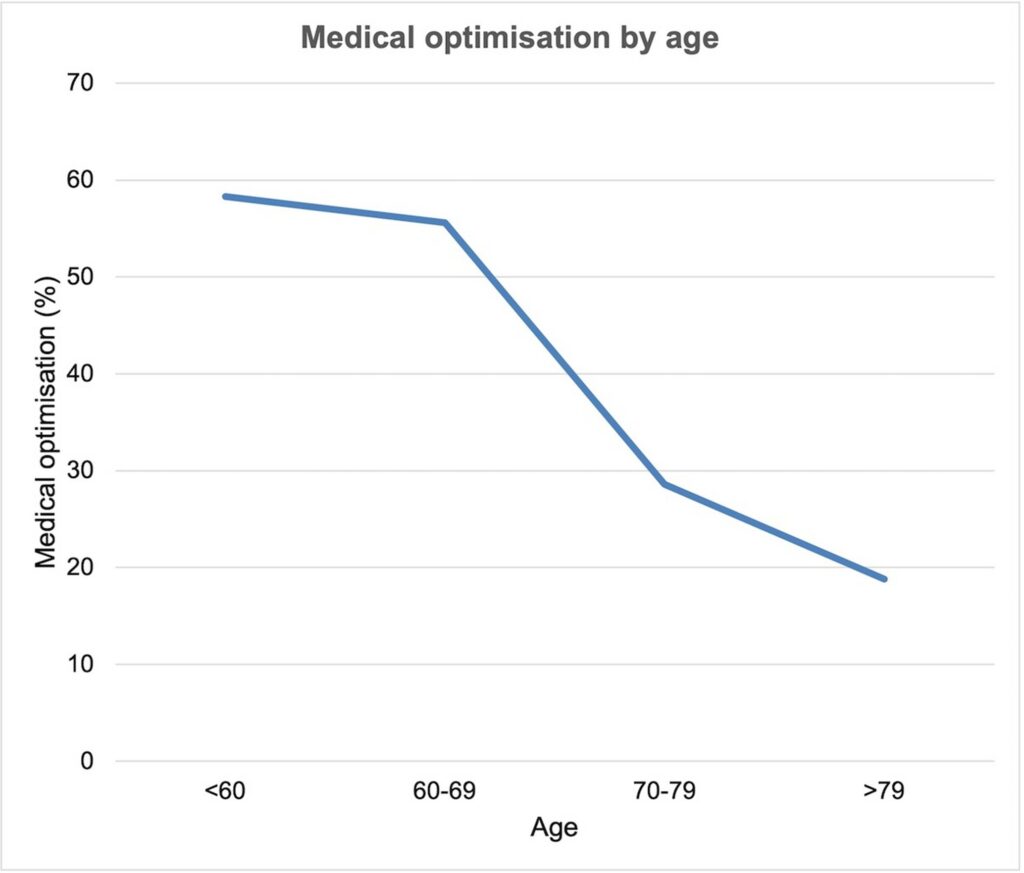Introduction: Optimization of heart failure medications has a vital role in improving the prognosis of patients with heart failure with reduced ejection fraction even after intervention with cardiac resynchronization therapy (CRT). We sought to determine the extent and impact of drug optimization in patients following CRT at our centre.
Methods: We conducted a retrospective, observational, quantitative cohort study of patients with a CRT device inserted at a district general hospital in 2014. Our primary outcome was of medication optimization (defined as achieving >50% of the maximum licensed dose of angiotensin blockers [ACEi, ARB, ARNI], beta-blockers [BB] and mineralocorticoid receptor antagonists [MRA]), with a secondary outcome of longevity.
Results: One hundred and eight patients were included in the study, and a total of 732 years of patient follow-up data was analyzed. The average age was 72.8 ± 11.2 years at the time of device insertion, and 39.8% were alive after 9 years. Achieving higher doses of angiotensin blockers, BB and MRA’s all had positive correlations with patient longevity, however only angiotensin blockers were found to have a statistically significant association (P=0.01), (P=0.11), (P=0.10) respectively. In total, 35.2% of patients were medically optimized; optimized patients tended to be younger (75.2 ± 12.6 versus 80.7 ± 8.5 years [P=0.01]) and lived longer (6.6 ± 2.9 versus 5.5 ± 3.0 years [P=0.08]). Of the patients included, 47.2% were prescribed all 3 therapeutic agents, 37.0% 2 agents and 15.8% 1 agent. Our data showed a progressive increase in longevity as the number of medications prescribed increased, regardless of the dose (P=0.01). There was a negative association between age and the number of therapeutic agents prescribed (P=0.10).
Discussion: Our data contributes to the evidence that medication optimization plays an important role in the longevity of patients with CRT devices. Older patients are less likely to receive optimal medical therapy. ❑
Figure 1: Medical optimization by age
















